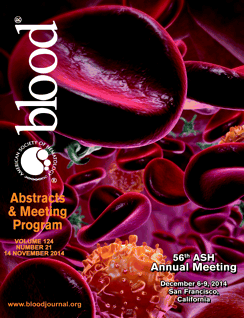Abstract
Introduction: Oral 6-MP remains a key drug for acute and maintenance treatment of ALL. Maintaining adequate systemic exposure so as to prevent disease relapse is challenging given variability in the pharmacokinetics (PK). Historically, pharmacies have prepared extemporaneous formulations of 6-MP to permit more individualized (i.e. mg/kg) and accurate dosing in small children which is difficult when using fixed dose tablets. We performed a preliminary investigation of the relative bioequivalence (rBE) of two extemporaneous oral liquid formulations of 6-MP.
Methods: Children with ALL participated in a randomized, 2-sequence, 2-period crossover study conducted at a single site. In study arm A, patients received a 5 mg/ml oral, liquid formulation of 6-MP prepared in 1:1 Ora-Plus®:Ora-Sweet and a marketed 50 mg tablet (Roxane Laboratories). Study arm B evaluated a 50 mg/ml liquid formulation prepared in methylcellulose and simple syrup against the 50 mg tablet. Participants were administered their prescribed 6-MP dose following an overnight fast. Serial blood samples (n=14) were collected prior to and over 8 hours post-dose. Plasma 6-MP concentrations were quantitated under GLP conditions using a validated, LC-MS/MS method. 6-MP PK was determined using a standard noncompartmental approach. The relative oral bioavailability of 6-MP was determined by generating 90% confidence intervals for log transformed ratios (test/reference) of Cmax, AUC0-n, and AUC0-inf.
Results: Twenty four participants (6-17 yrs) enrolled in this study. Eleven subjects (6 female) were in the 5 mg/ml study arm and 13 (8 female) were in the 50 mg/ml study arm.The inverse log of the 90% confidence interval generated by the ratio of thedifferences in exposures between the respective oral liquid formulations versus the tablet were as follows:
| Parameter . | Test Formulations . | |
|---|---|---|
| 5 mg/ml liquid | 50 mg/ml liquid | |
| Cmax (ng/ml) | 1.64-2.72 | 1.07-1.72 |
| AUC0-n (ng/ml*hr) | 1.10-1.65 | 0.85-1.17 |
| AUC0-inf (ng/ml*hr) | 1.10-1.65 | 0.84-1.13 |
| Parameter . | Test Formulations . | |
|---|---|---|
| 5 mg/ml liquid | 50 mg/ml liquid | |
| Cmax (ng/ml) | 1.64-2.72 | 1.07-1.72 |
| AUC0-n (ng/ml*hr) | 1.10-1.65 | 0.85-1.17 |
| AUC0-inf (ng/ml*hr) | 1.10-1.65 | 0.84-1.13 |
All estimates of exposure for the 5 mg/ml liquid exceeded the accepted range of bioequivalence (i.e. 0.80-1.25) per FDA criteria. Cmax for the 50 mg/ml liquid similarly exceeded theaccepted range. In contrast, AUC0-n and AUC0-inf for this particular formulation were within the accepted range based on FDA criteria.
Conclusions: While both liquid formulations exhibited comparable bioavailability, neither formulation was bioequivalent to the tablet formulation for both Cmax and AUC. The systemic exposure to 6-MP (as reflected by AUC) from the 50 mg/ml oral liquid was bioequivalent to the tablet. Our data demonstrate that not all liquid formulations of 6-MP are equivalent with respect to bioavailability of the active ingredient. Differences in formulation constituents (e.g., suspending agents, vehicles), viscosity and potentially, 6-MP concentration likely contribute to the variability observed in systemic drug availability from liquid formulations and must be considered.
No relevant conflicts of interest to declare.
Author notes
Asterisk with author names denotes non-ASH members.

